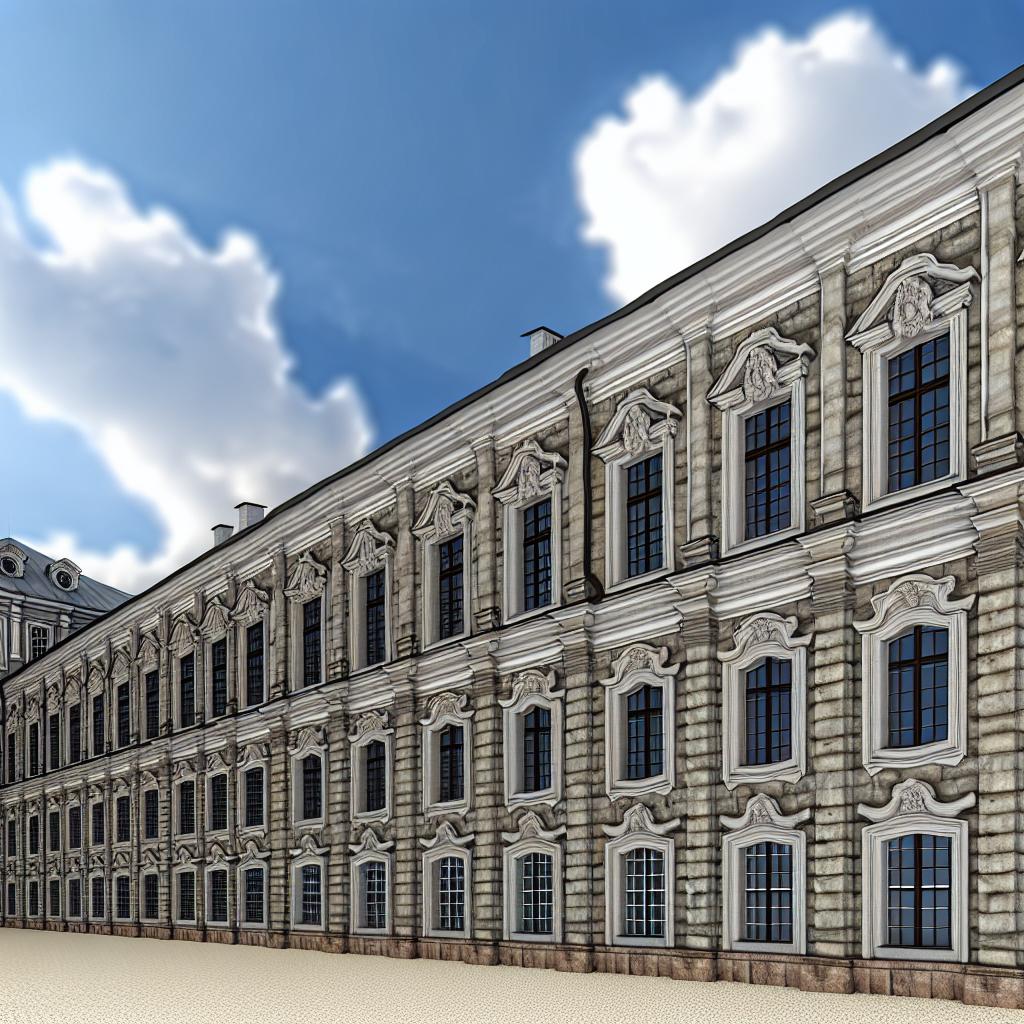Introduction to Menshikov Palace
Menshikov Palace, located in Saint Petersburg, Russia, serves as a key historical landmark, noted for its architectural beauty and significance in Russian history. It is among the earliest edifices on Vasilievsky Island, which functioned as the administrative nerve center of the new Russian capital during the early 18th century. This palace stands as a quintessential example of the period’s grand architectural ambitions and the political climate under Peter the Great.
Historical Background
The construction of Menshikov Palace began in the year 1710 under the commission of Alexander Danilovich Menshikov, a close ally of Peter the Great and the inaugural Governor of Saint Petersburg. The project drew upon the talents of architects Giovanni Maria Fontana and Gottfried Johann Schädel. This strategic endeavor aimed to reflect the panache and influence of Menshikov within the Russian court. The design epitomizes the Petrine Baroque style, which was highly fashionable due to Peter the Great’s dedication to Europeanize Russian aesthetics during his reign.
Menshikov’s stature in the royal entourage granted him substantial power, which is reflected in the monumental nature of the palace. It served not only as a dwelling but also as a testament to his significant influence and status. This prominence is palpably evident in each detail of the mansion’s construction—an emblem of its era’s opulence and grandeur.
Architectural Features
The architectural elegance of Menshikov Palace weaves together traditional Russian motifs with Western architectural influences. This synthesis mirrors Peter the Great’s vision of modernizing Russia by integrating European elements. The exterior of the palace is characterized by a grand facade which speaks of its significance, coupled with interiors that house high ceilings and opulent detailing.
One can observe luxurious, frescoed ceilings adorned with meticulously detailed stucco work, demonstrating the craftsmanship of the era. Additionally, fireplaces crafted from the famous Dutch tiles further highlight the artistic collaborations between Russia and Western Europe. This fusion of local and imported materials not only adds to the aesthetic appeal but also illustrates the blend of cultural elements characteristic of the time.
The Palace’s Role and Use
Initially, Menshikov Palace played a dual role; it was a sumptuous private residence and a venue for hosting official events, from diplomatic meetings to grandiose ceremonies. However, following Menshikov’s eventual fall from grace, the palace underwent multiple functional transformations. Among its notable adaptations was its service as a military academy, a function it retained for a significant period.
In the 20th century, its role evolved once more, becoming part of the esteemed Hermitage Museum’s management. This transition preserved its heritage while adapting its purpose to suit contemporary cultural and historical educational needs.
Present-Day Significance
Today, Menshikov Palace stands as a pivotal branch of the State Hermitage Museum. It showcases a collection centered around the art and culture of early 18th-century Russia, granting visitors a window into the lifestyle and environment of its original proprietor. The palace serves as a vital educational resource, offering insights into the architectural and aesthetic preferences of Russian nobility during the era of Peter the Great.
The palace’s preservation and its current use as a museum suggest that it is not only a relic of Russia’s architectural and political history but also an active custodian of cultural education. Exhibitions enable visitors to delve into the richness of Russia’s historical narrative and experience the grandeur of the early Baroque period.
For further exploration of the palace’s current exhibits and historical insights, visitors can access the extensive resources available through the official Hermitage Museum website. There, one can find additional details on visiting hours, specialized exhibitions, and guided tours that enhance the understanding of this architectural jewel.
To summarize, Menshikov Palace is far beyond a mere historical structure. It is a symbol of diplomatic, architectural, and cultural sophistication, serving as a bridge connecting Russia’s imperial past with its present. Its ability to captivate both the hearts and intellects of its visitors ensures its place as a cherished part of Russian heritage and an invaluable resource for understanding the dynamics of the early 18th-century Russian empire.

